Sony Xperia XZ3 review
Sony is a force to be reckoned with in the tech world. The Japanese icon’s TVs and cameras have been making waves over the last few years, and its high-end headphones are incredibly easy to recommend, with their balanced sound and excellent noise cancelling.
This success however hasn’t been replicated across the board. In a crowded smartphone market, Sony’s flagship Xperia XZ1 and Xperia XZ2 made little more than a ripple when they were announced.
Now, with the Xperia XZ3, Sony hopes to change that, and for the first time in a long time, we’re convinced it’s onto something incredible – specifically its Bravia OLED screen technology for mobile.
Made by Sony, the OLED screen comes together with the latest chipset from Qualcomm and a very elegant, albeit familiar design. It’s clear that this is Sony’s best smartphone to date – but can it compete with the likes of the Samsung Galaxy S9 and iPhone XS?
Price and availability
- Out October 5 in the UK
- Out October 17 in the US
- Costs £699/$899 (around AU$1,260)
If you want to buy the Sony Xperia XZ3, you’ll be able to do so from today in the UK and October 17 in the US. We don’t currently have a release date for Australia, but as the Sony Xperia XZ2 came to that market we’d expect this phone will as well, and quite speedily.
You can pre-order the phone now in the UK, and if you do you’ll get free access to the beta of Call of Duty Black Ops 4, and you’ll even get a free copy of the game when it’s released too.
Pre-orders are also open in the US and early buyers can snag a free pair of Sony Xperia Ear Duo headphones with the handset.
In the UK the Sony Xperia XZ3 price is set at £699. In the US it costs $899.
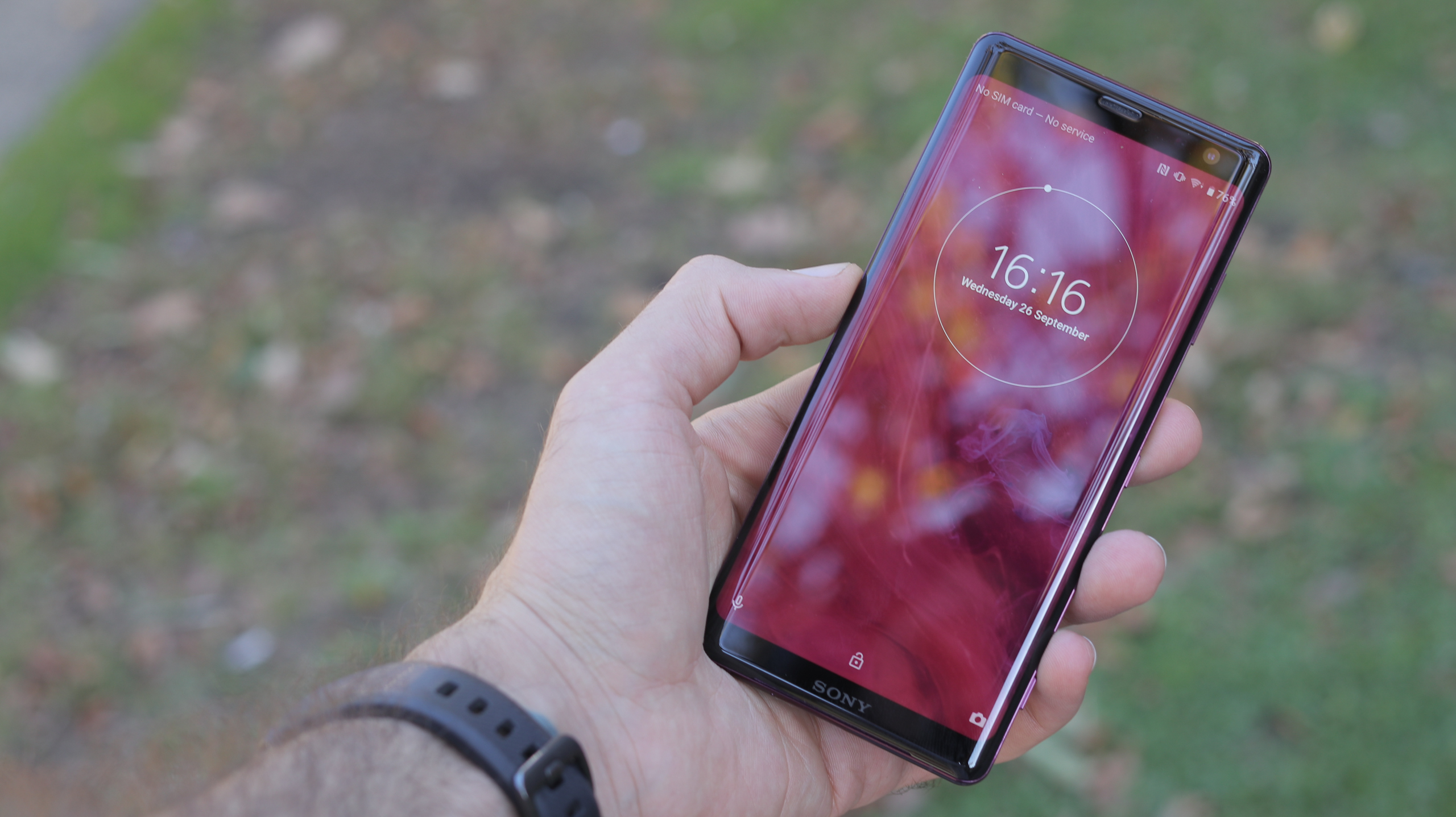
Key features
- Loud stereo speakers and High-Res audio support
- Top-end Snapdragon 845 chipset
- An OLED Sony screen for the first time on a phone
The Sony Xperia XZ3 is powered by a Snapdragon 845 chipset, paired with 4GB of RAM and 64GB of internal storage. It has microSD support of up to 512GB, and the 3,330mAh battery is paired with Sony’s Battery Care optimizations and wireless charging.
Sony has also retained IP68 water- and dust-resistance in its flagship series, and has protected the front and back of the phone with Gorilla Glass 5.
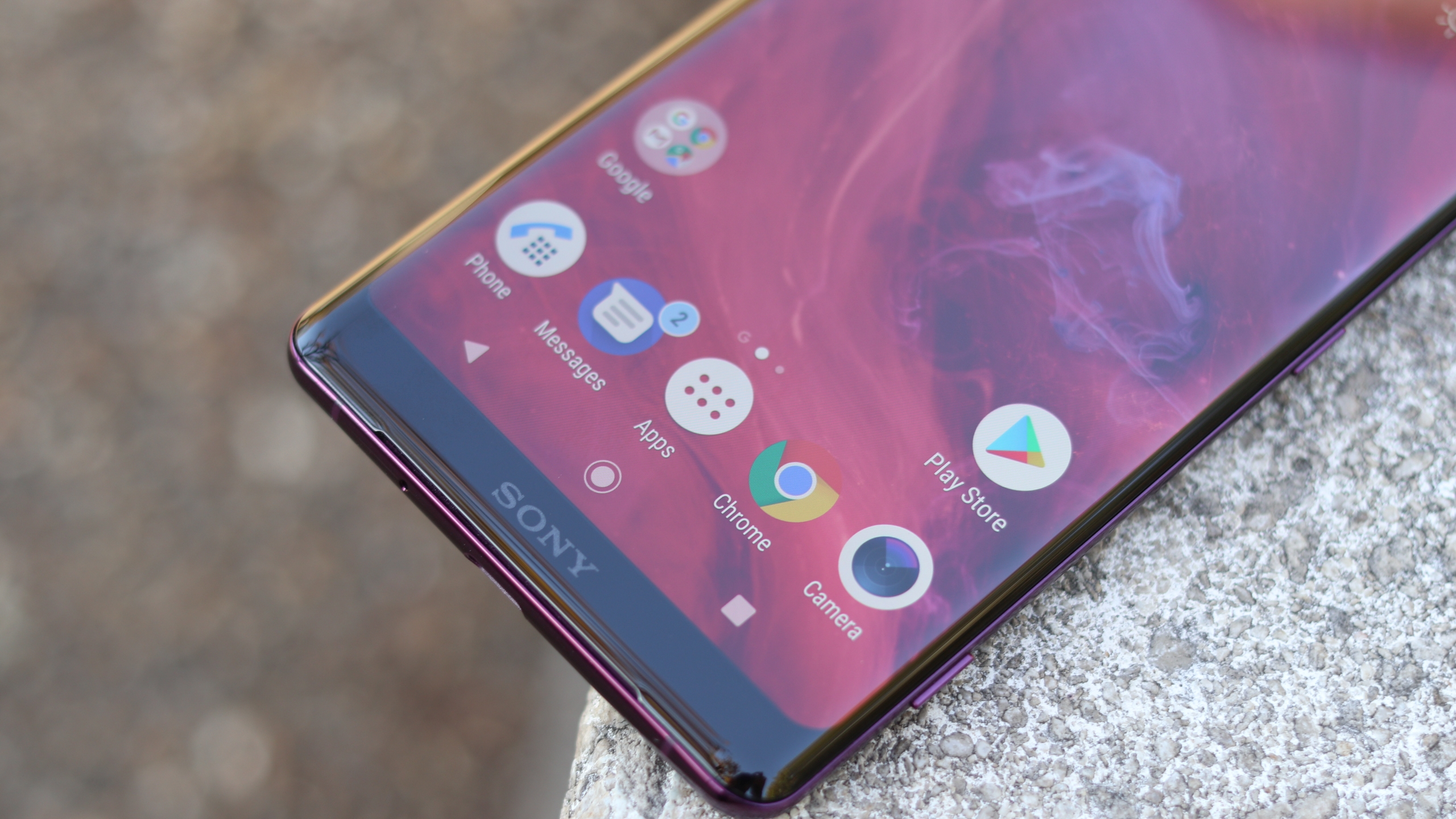
The 6-inch 18:9 screen introduces Sony’s OLED technology to mobiles, which pairs with QHD+ resolution and Sony’s proprietary HDR up-conversion software.
Sony has also retained the 1/2.3-inch Exmor RS camera sensor found on the XZ2, complete with the same f/2.0 lens and digital image stabilization.
Video specs also remain the same, with highlights including 960fps super slow-motion video and 4K HDR recording. Selfies can be taken on the 13MP front camera, which has a new bokeh mode for software-applied background blur and improved digital stabilization.
Sound credentials are also impressive, with High-Res Audio support and Sony’s LDAC codec improving audio quality through wireless headphones. A USB Type-C to 3.5mm jack adaptor is supplied in the box, while the stereo speaker with S-Force Front Surround promise to be significantly louder than those of the XZ2.
Finally, with the Xperia XZ3 offering download speeds of up to 1.2Gbps, and Bluetooth 5 on board, connectivity options are competitive too.
Design
- Striking color options
- Chunky and heavy but still feels elegant and comfortable
- No 3.5mm headphone port
From the front, you’d be forgiven for thinking that the Sony Xperia XZ3 was a Samsung Galaxy S8 or Galaxy S9. Curved-edged OLED – what other mainstream phone could it be? That said, flip it around and it’s almost a carbon copy of the Xperia XZ2.
Much of what was good about the XZ2 from a design point of view has made a return: IP68 water resistance, Gorilla Glass 5 on the front and the back, and an 18:9 aspect ratio screen, coupled with stereo speakers and no notch in sight.
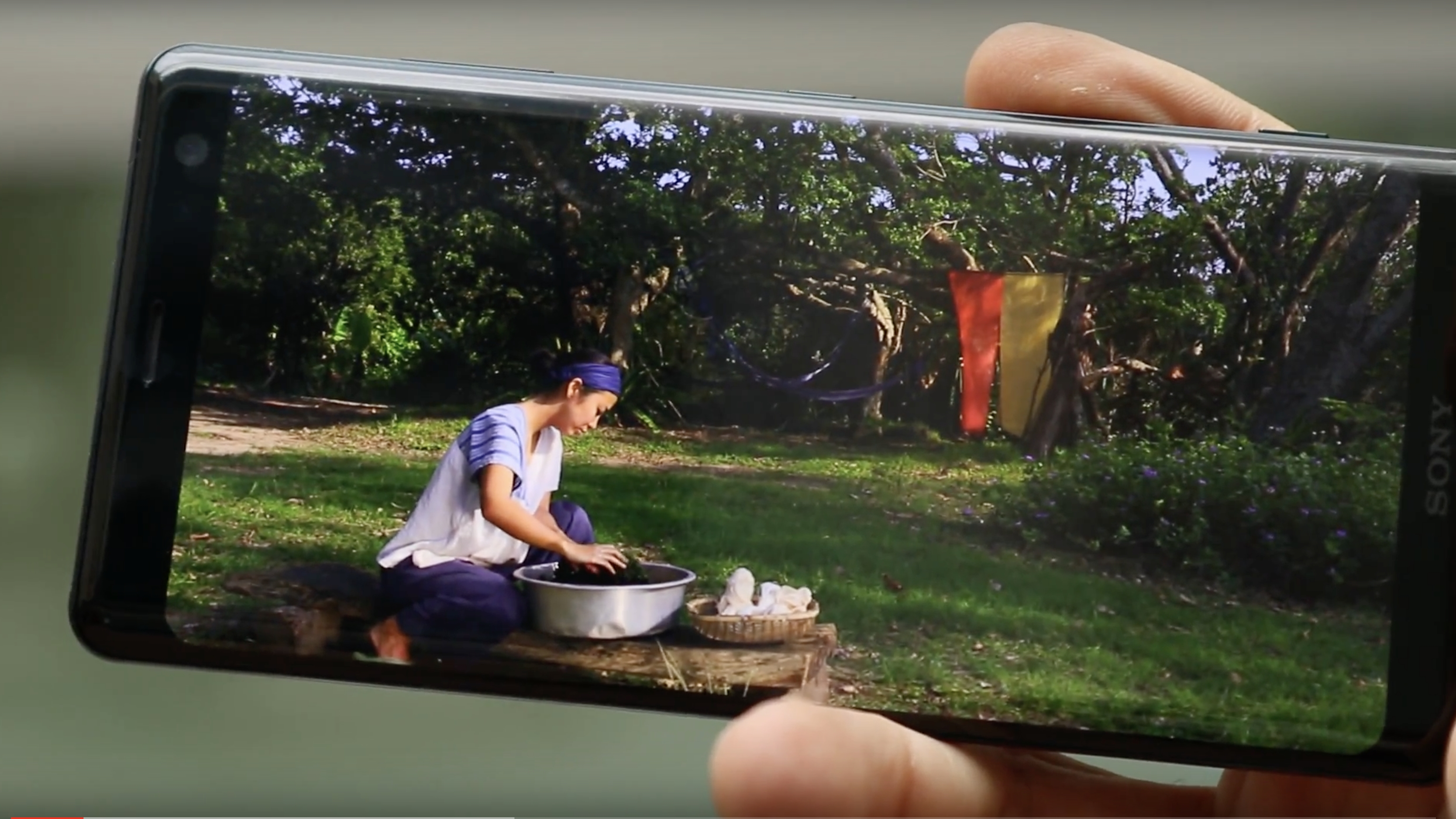
The curved display adds a visual and in-hand elegance to the design. Color options consist of Black, White Silver, Forest Green and Bordeaux Red. The latter two are the most striking, with Bordeaux Red being the most attention-grabbing of the four.
A stronger metal has also been used in the construction of the XZ3’s frame, resulting in a sturdy device that looks and feels premium.
Our Xperia XZ3 hasn’t had a case on it, and it has picked up a few noticeable scratches on its back at its thickest point. Curved on both axes, it isn’t surprising that the outermost part of the glass back is most susceptible to scuffs, as it’s the only part of the phone in contact with a resting surface.
It’s just a bit heart-breaking that you’ll have to cover it up if you want to keep your Bordeaux Red XZ3 looking pristine – but that’s just the way it is.
Having said that, the high-polish metal frame hasn’t picked up a single scuff, which is impressive, and in particular shows up our ravaged iPhone X and its scratch-magnet stainless steel banding.
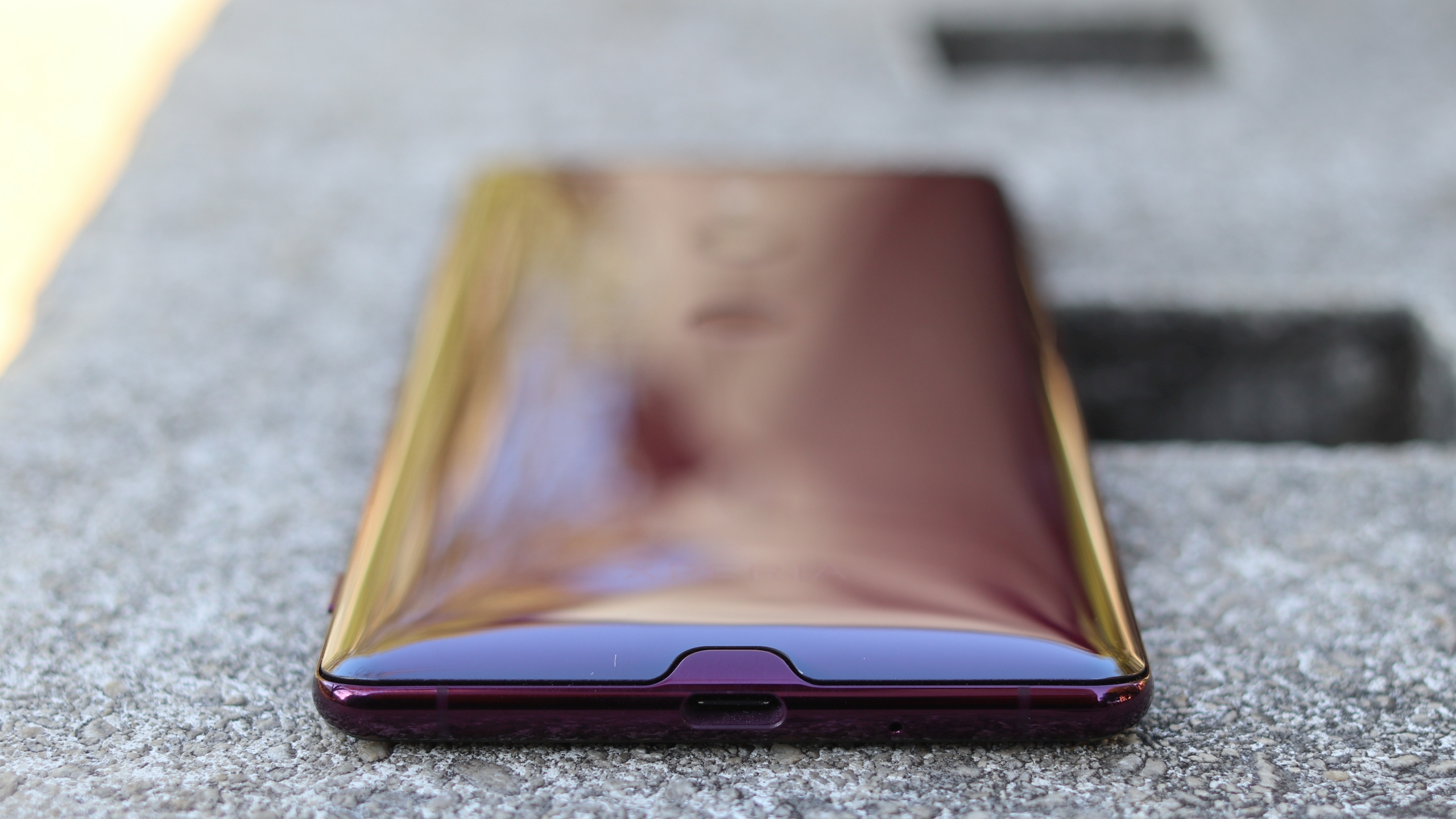
Weighing 193g, the XZ3 isn’t light. It’s heavier than the bigger-screened Samsung Galaxy S9 Plus, although coming in at around 10 grams less than the Galaxy Note 9 and iPhone XS Max, neither is it the heaviest phone around – 236g Sony Xperia XZ2 Premium, we’re looking at you.
The Xperia XZ3 is also 9.9mm at its thickest point, so isn’t particularly slender, though thanks to its tapered design it still feels elegant and comfortable to hold, more so than the thinner XS Max.
Disappointingly – and we called Sony out on this when we reviewed the XZ2 – the camera is still where the fingerprint scanner should be on the XZ3.
With both these elements being too low, a fumbling finger trying to unlock the phone almost always veers first towards the camera lens, then down to the fingerprint scanner. This makes for a grubby snapper more often than not.
Other design highlights include a SIM card/microSD card tray that can be removed without a SIM eject pin, and a physical camera button. Meanwhile, the lone USB-C port and lack of a 3.5mm headphone jack may not be to everybody’s tastes, although a 3.5mm to USB-C dongle is supplied in the box.
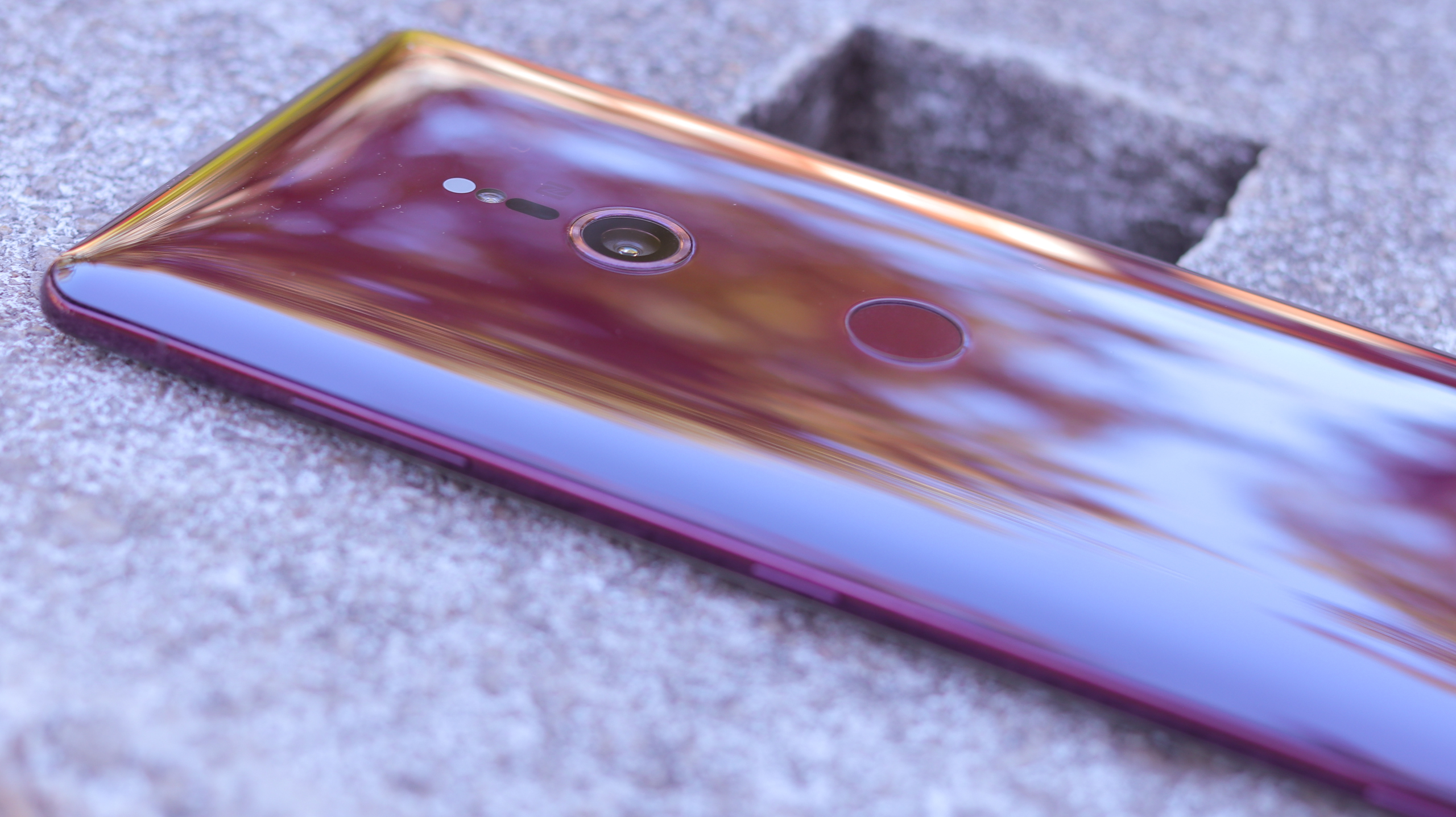
All in all, while certainly not perfect, the Sony Xperia XZ3 is a very attractive, elegant smartphone that’s available in some striking colors and showcases a jaw-dropping screen.
Display
- Possibly the best smartphone screen ever made
- 6-inch, 1440 x 2880 OLED screen
Flat, washed-out, mediocre viewing angles, mismanaged blues… these are all criticisms hurled at Sony flagship TFT LCD screens over the last five years. Now Sony has gone OLED, and everything has changed.
Because it’s all about quality, that’s where we’re going to start. The depth of the blacks here, the balance of realism and vibrancy in YouTube videos specifically, the breadth of the tones this screen portrays… side by side with the iPhone XS and the Galaxy Note 9, playing the same Full HD YouTube content, we’d pick the XZ3 every single time.
Why? Because its colors feel more dynamic, and it picks up details the other two screens don’t – in short, it’s just better.
So the XZ3 is the best phone for YouTube – which is a big deal, as that’s what more people are spending more time watching.
The reason for this isn’t just how the display looks – the XZ3 also gives you resolution options that neither the iPhone XS or Note 9 support, up to 1440p, 60fps in HDR, with the Note 9 only going up to 1080p with HDR and the iPhone not even specifying HDR at the time of writing.
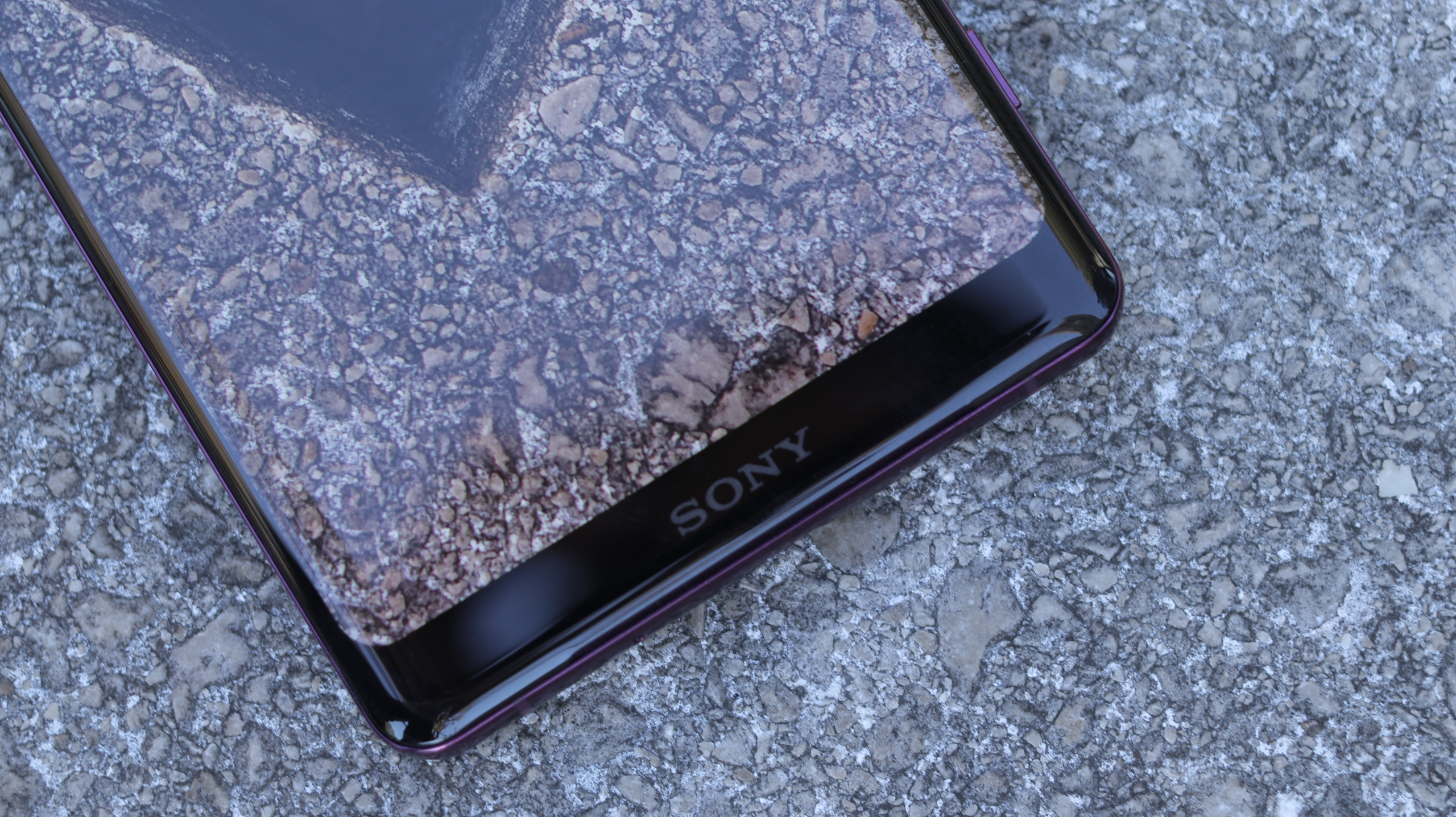
In the settings, there are options to fire up video enhancements or change your color mode. Video enhancements take effect across YouTube and Netflix, not just the native video application, boosting saturation and tweaking contrast.
The default setting is beautifully measured for the rest of the UI, with more natural vibrancy and contrast levels than you might find on competing smartphones.
You even notice the excellence of the Sony Xperia XZ3’s screen when performing day to day tasks – finding your WhatsApp wallpaper looking that bit better than it looked on your old phone, and that app loading screen you never really noticed before. We’d be very surprised if Apple isn’t eyeing up Sony for future iPhone OLEDs.
With its 6-inch screen, the XZ3 sits between the iPhone XS and iPhone XS Max in terms of size. Unlike Apple’s and Huawei’s flagships, the XZ3 doesn’t feature a notch, opting instead for a rectangular OLED with curved edges and rounded corners, a la Samsung.
At 1440 x 2880 it’s sharper than the new iPhones, at 537 pixels per inch vs 458 pixels per inch. This is more of a revelation than it sounds for long-time Sony followers – the company has finally bridged the gap between its not-quite-sharp-enough Full HD flagships of old and its overkill 4K Premium series.
Pair those screen enhancement wins with HDR upscaling, Sony’s TRILUMINOS Display for mobile, X-Reality, and Dynamic Contrast Enhancer – all proprietary software to help improve the image – and while we can’t necessarily tell you which one makes the biggest difference, they all come together in visual harmony with the XZ3’s hardware to produce what could be the best smartphone screen ever made.
Battery life
- 3,330mAh battery delivers average life
- Supports wireless charging
Sony is great when it comes to battery care – i.e. making sure your phone battery doesn’t deplete as quickly as the competition’s – and this is good news for anyone who wants to keep their phone for a long time. What Sony is less great at is getting big batteries into its phones in the first place.
At 3,330mAh the Sony Xperia XZ3 has the biggest battery of any Sony flagship to date – but it also has the biggest screen, and this means you get similar battery performance to that of the Xperia XZ2.
In the real world this translates to a day of light-to-moderate use, with heavy use necessitating a late-afternoon boost to get you through a day. We often found the battery lasting the whole day, but if you're set to be watching lots of video we'd recommend charging it up mid-way through the day.
In our standard TechRadar battery test, where we run a looped video for 90 minutes, the Xperia XZ3 lost 20% of its battery, which is a middling result.
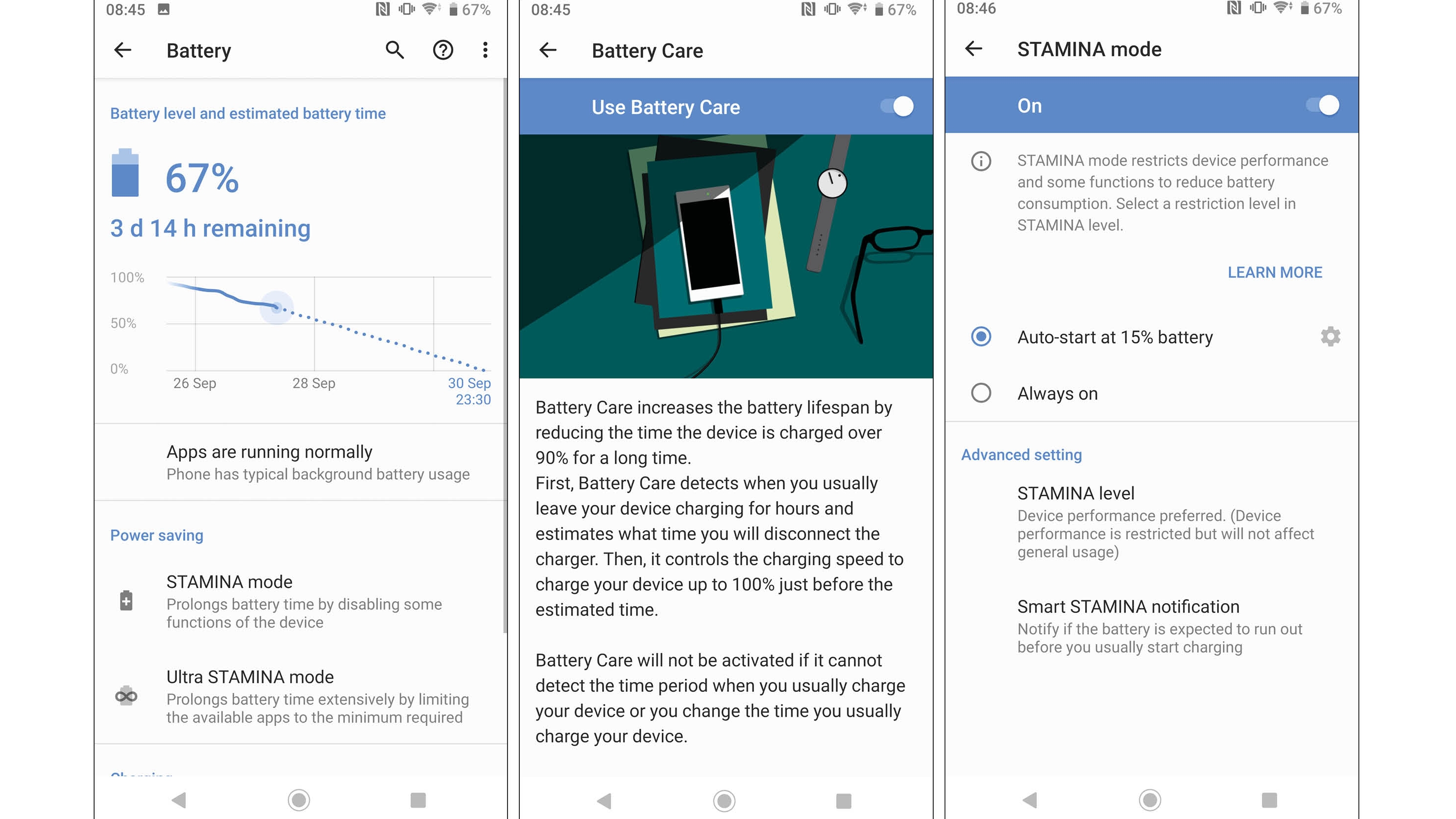
The inclusion of wireless charging will help heavy users to keep topped up without too much faff, given that wireless charging pads are easier to get than ever.
Sony’s battery care also features a number of power-saving modes, so even if you’re running low you can still squeeze out an extra few hours from your XZ3.
Camera
- 19MP single-lens rear camera
- Good but not great quality
Sony introduced the 19MP f/2.0 camera found on the XZ3 a year ago in the Sony Xperia XZ1, but while this might put off anyone thinking of upgrading from an XZ1, the XZ3’s camera is much, much better.
The user interface has been streamlined for starters, so there’s less swiping to get to the various modes and frequently accessed settings are always shown on-screen, so there’s minimal fiddling around when prepping your shot.
Image quality is much improved over the XZ1 too, with better clarity, low-light performance and dynamic range. It feels like a completely different camera.
But while the XZ3 is an excellent stills camera by Sony’s standards, it isn’t quite so impressive by those of other flagship smartphones.
In good light, detail is strong, and a nice amount of background blur can be achieved without calling on any bokeh modes. Where things fall down is when it comes to dynamic range – the camera has a tendency to overexpose highlights in higher-contrast scenes. If you want to use this camera in auto mode, the exposure slider is going to be your best friend.
Medium-to-low light sees grain creep in more aggressively than on other phones. There’s less softening and noise reduction than we see with Samsung phones for example, but both the Galaxy S9 and Galaxy Note 9 still produce better low-light shots.
Meanwhile, the likes of the Google Pixel 2 and Huawei P20 Pro edge even further ahead with their dynamic range and detail, and, in the latter case, Huawei’s smart low-light capabilities.
The good, not great image quality hampers a few areas of photography, from the onboard bokeh mode being lower-quality than we’d hoped for, right through to the digital zoom, with the up to 8x zoom performing worse than the zoom on all the main competitor phones.
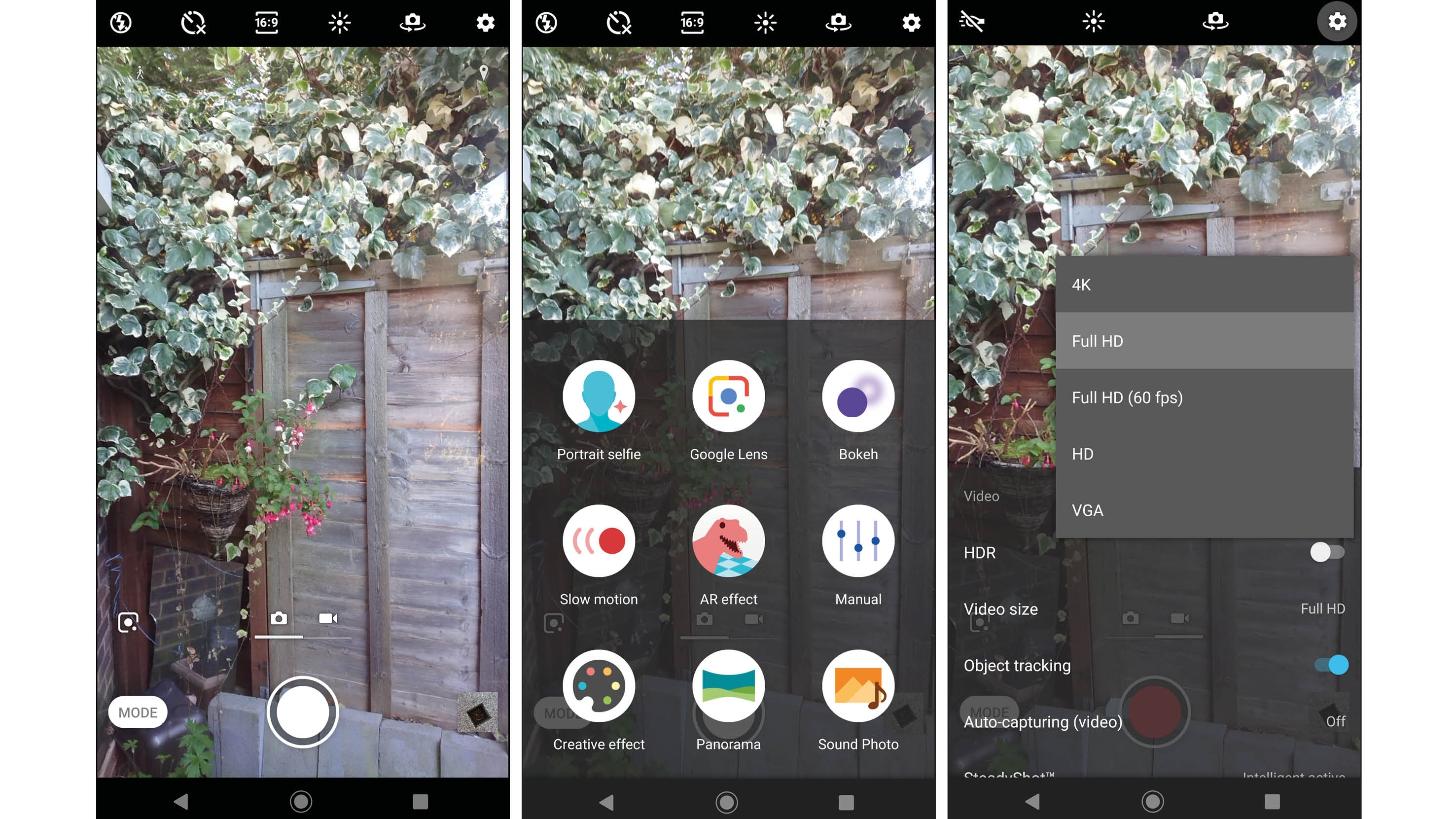
Video
- Can shoot great quality 4K HDR footage
- Also supports 960fps Full HD slow motion
Where Sony pulls things back is when it comes video. The digital stabilization works well in good light in particular, and the 4K HDR footage you can capture is simply breath-taking.
In contrast to stills capture, dynamic range in video trounces the competition when footage is viewed on a compatible HDR screen, such as those on this phone or the Samsung Galaxy Note 9, so any video buffs can get excellent results if the lighting’s right and they’re willing to invest time squeezing the best from the phone’s video camera.
Sony is also still the only manufacturer whose phone cameras are able to capture 960fps Full HD slow motion, with the competition capping out at 720p. It’s totally unusable in medium to low light, but it’s a nice feature to have when you’re outdoors on a sunny day.
Selfies
- 13MP front-facing camera
- Offers both bokeh and beauty modes
A bumped-up 13MP sensor with a wide 23mm equivalent lens and improved digital stabilization means selfies on a Sony phone have never looked this good.
There’s a beauty mode to brighten your eyes and slim down your face – or you can turn it off for natural-looking photos – as well as a bokeh mode for software-based background blurring, like the Pixel 2, which works respectably well.
The same can be said for the front camera in general across photo and video, which is a nice improvement over what was a lacklustre experience on the Xperia XZ2.
UI and performance
- Runs Android 9
- Generally fast, but not always
It isn’t just an excellent screen Sony should be applauded for – the Xperia XZ3 ships with Android 9, the latest version of Google’s mobile OS.
That’s good news, because you’re about as future-proofed as you can get when it comes to app compatibility and security updates – and given how good Sony is at updating its flagships, the only devices in a better position than the XZ3 in this respect are the new iPhones and the upcoming Google Pixel 3 range.
Sony’s take on Android is also clean and zippy – for the most part. And this caveat is incredibly important, because when it isn’t, it leaves us bashing our head against a wall.
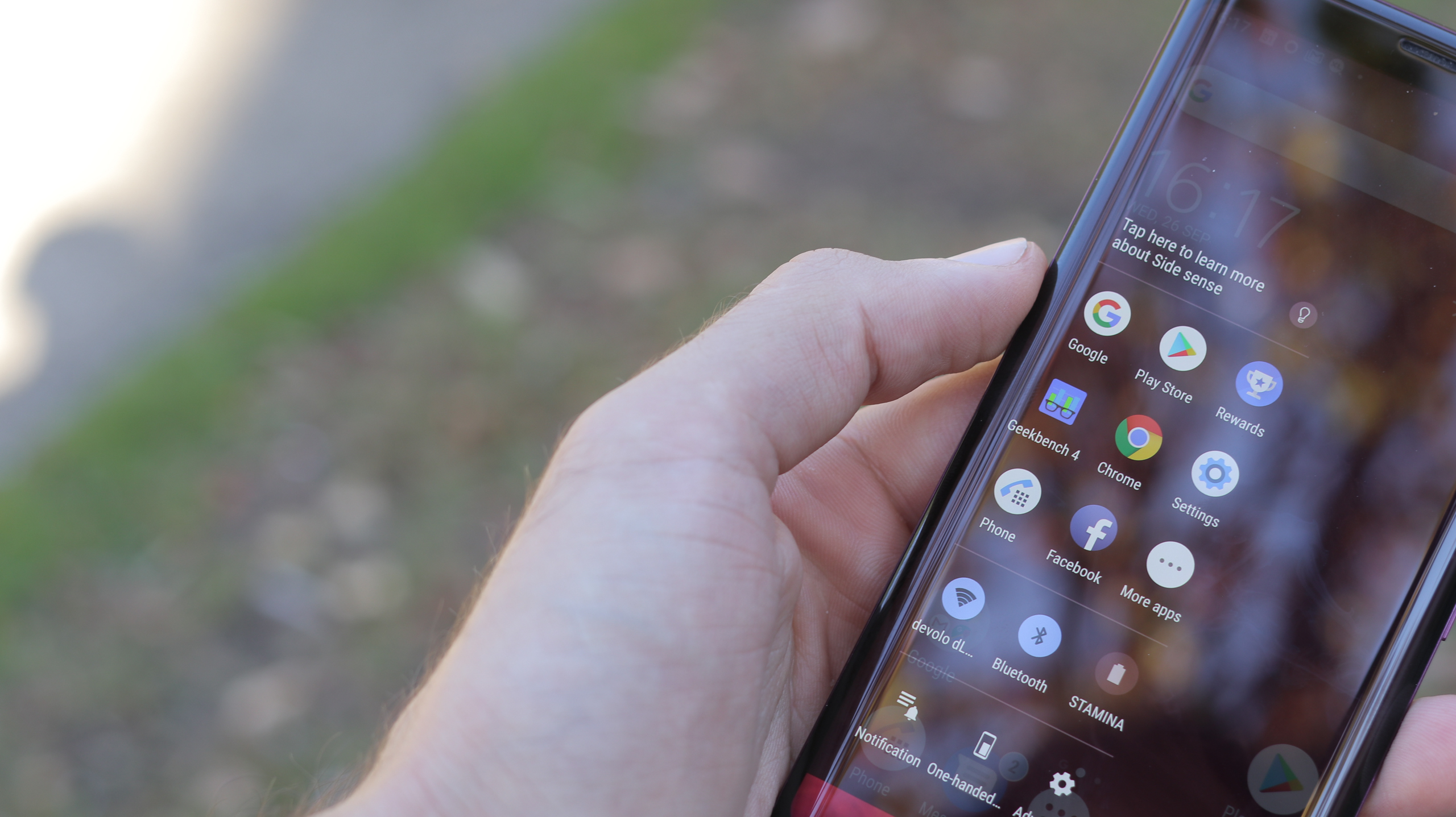
Inside is the Qualcomm Snapdragon 845 chipset that works well and offers some of the best performance you can expect on a smartphone in 2018. Using Geekbench 4, we found the phone had a score of 8614.
That's a bit higher than the Xperia XZ2 that scored 8225 in the same test, and it's what we expect to see on a top-end phone in 2018. It does translate into real-life usage well too, and we often found apps loaded fast and generally moving around menus was snappy.
Side Sense
- Provides shortcuts to apps on the display edge
- Slow and unreliable
Sony has a new solution for enabling one-handed use on a phone with a 6-inch, super-long screen and it's called Side Sense.
When it works, it’s excellent, overlaying quick access to applications you use frequently on either the left- or right-hand side of the screen, depending on which side you double tap. Similar to the feature introduced on the Samsung Galaxy Note Edge, it’s very handy.
Sony has also gone one step further, enabling a ‘back’ input that can be activated by swiping up or down on the edge – a natural position for your thumb to rest, so you don’t even have to interact with the navigation bar unless you want to multitask or go home.
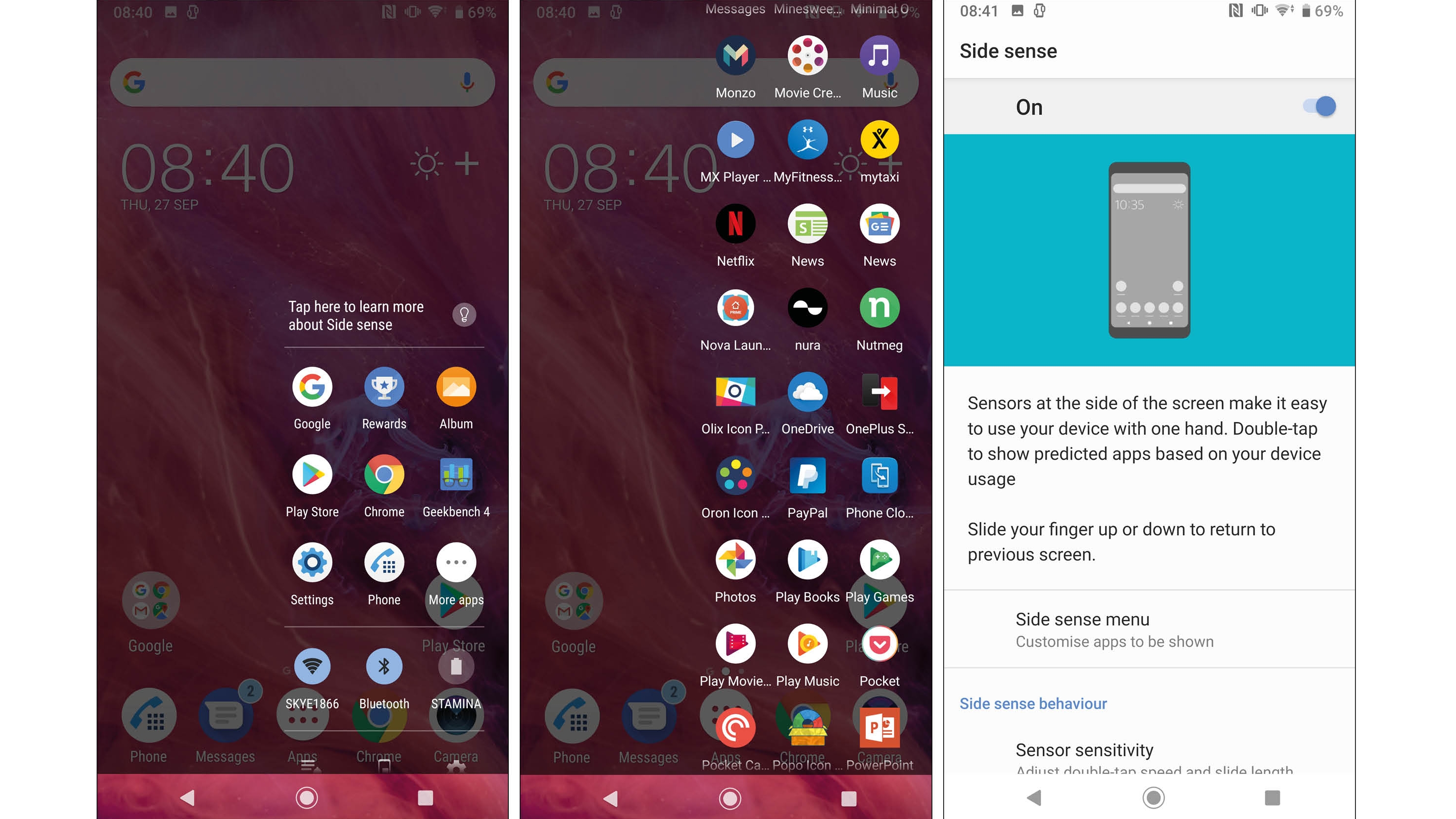
In principle, all the above is great, but in reality, it’s not perfect.
Side Sense can be temperamental and we found it didn't always activate and sometimes it activated when we didn't want it to. We've used two versions of the Xperia XZ3, and on one it often took around four seconds to open Side Sense when opening for the first time in a while.
Four. Whole. Seconds - for something that's meant to save you time. In four seconds, a nimble-fingered smartphone user could have found Instagram, opened it, seen that their last post has had seven new likes and closed it. We hope this is a quirk of one unit, and it seems to be as the other phone we used didn't have the same issue.
On the other phone, we found Side Sense to be less irritating but it did go off twice in about a week of us using it from just holding it in the hand. If you don't like it, you can easily turn it off but Side Sense is quite useful for navigating around your phone when it actually works.
Bloatware
- Lots of bloat, some of which can't be uninstalled
- Lots of UI customization options
We aren’t quite done with the UI bashing, with the next whack-a-mole topic being bloatware. 64GB is the bare minimum of storage we would expect to see on a flagship today, and to have any of that taken up by applications like Kobo Books or AVG Protection is painful.
Sony also includes its own 3D Creator, What’s New and Weather apps, as well as a few Amazon apps, Netflix, Spotify and Facebook.
Some of these can be uninstalled, but some you can only disable – so, for example, you can’t have a completely Kobo- or Facebook-free phone; the app just disappears from your apps tray if disabled, but still occupies internal storage.
The rest of the UI is great. Sony gives you plenty of customization options around the standard Android home screen setup, and it looks polished. 3D Creator, despite the bloatware complaints, is also tons of fun, and is much easier to use than when it first launched.
Sony could have just not installed the bloatware – that would have made this phone feel much more refined. As it stands, what you end up with is a mixed bag of bad and great, which you have to refine after a fair bit of frustration.
Sound
- No headphone port
- Great stereo speakers
- High-Res audio support
The Sony Xperia XZ3, like the Sony Xperia XZ2, may ditch the headphone jack, but that doesn’t mean it’s ditching the series’ focus on audio.
High-Res Audio support and Sony’s LDAC audio codec are here to boost performance when you’re using headphones, wired or wireless.
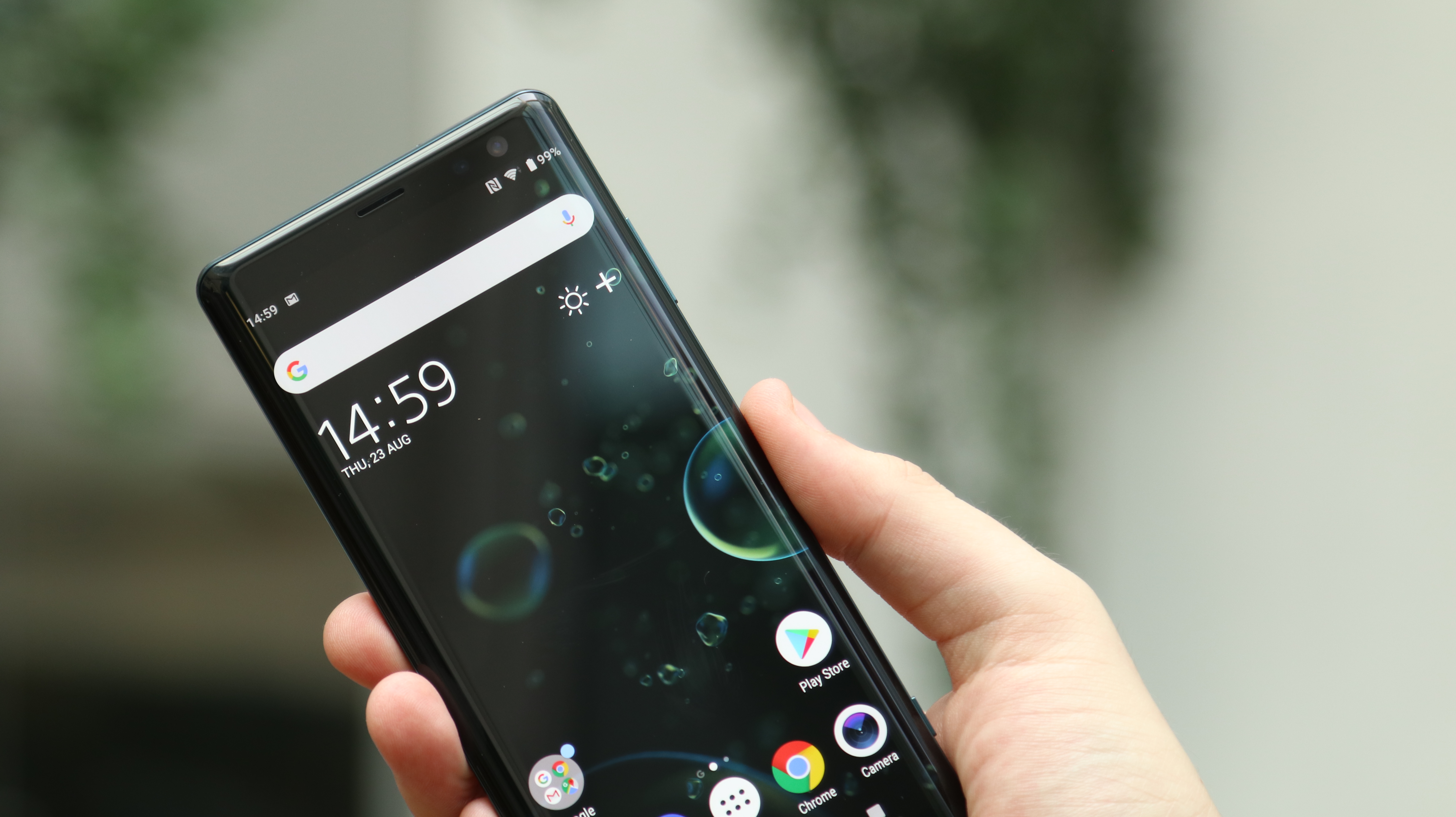
Meanwhile, the stereo speaker with S-Force Front Surround makes for an immersive experience when watching video. Fire up a Dolby Atmos trailer on YouTube, and between the visuals and the sound it’s a beautiful thing.
There’s also a USB Type-C to 3.5mm adaptor in the box, if you do want to use your wired cans.
Storage and connections
- 64GB plus a microSD card slot
- Supports fast downloads
- Has both a fingerprint and face scanner
The Xperia XZ3’s 64GB of storage is the bare minimum we would expect on a flagship nowadays, with some mid-rangers, like the Huawei Mate 20 Lite, also packing that.
This can be expanded via microSD card, something you’ll certainly want to look into if you plan on capturing 4K HDR video.
With support for Cat 18 internet speeds, the XZ3 supports up to 1.2Gbps downloads – if your carrier does too – and that’s paired with Bluetooth 5, NFC and GPS.
The rear fingerprint scanner works a treat, notwithstanding its awkward positioning, and in the settings you can also access Google’s Trusted Face feature to activate the less secure biometric unlocking feature – face recognition.
Verdict
There’s something heart-breaking about the Sony Xperia XZ3. It is, without a doubt, the best phone Sony has ever made. A beauty to hold and to look at, at first glance it’s everything a modern smartphone should be.
The design is sleek… and boy, that screen. It’s so, so good, and every single person who saw it was gobsmacked. We never saw this one coming, but Sony has set a new standard here.
There are a few pain points including some UI elements that start to stutter, but most of these can be solved by diving into the settings and turning off certain features, such as Side Sense if you find it irritating.
There's no getting around the fingerprint scanner placement though, and these frustrations makes the XZ3 an imperfect smartphone with glimmers of brilliance.
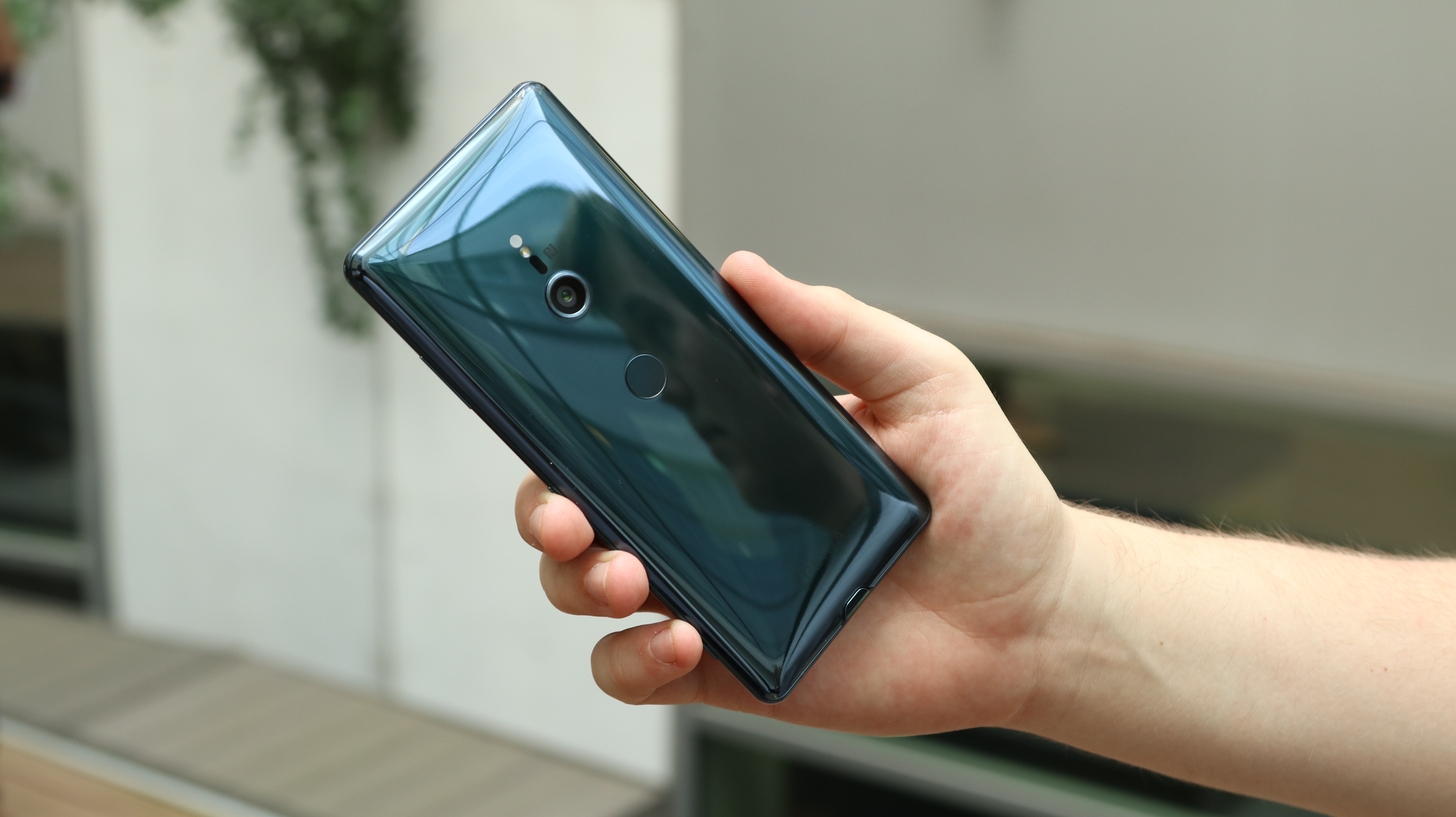
Who’s this for
If you spend a lot of time on YouTube or gaming and don’t care about much else, the Sony Xperia XZ3 is pretty much your perfect phone – provided you don’t mind topping up the battery throughout the day.
If you need the best camera, a flawless user interface experience or the most bang for your buck, you may want to look elsewhere.
There is a third group of people who should consider the XZ3: people who like the Sony Xperia range and don’t mind deactivating the buggy features, at least until potential software updates render them less buggy.
Should you buy it?
Whether you should buy the Sony Xperia XZ3 depends on the price you’re paying and your expectations of the phone.
Will it last a full day? Only just. Will it take excellent pictures? Yes, but other phones like the Google Pixel 2 and Huawei P20 Pro will take better ones. Does video look incredible on its OLED screen? Most definitely – and the 4K HDR video it captures looks fantastic too. Will it take some tweaking to eke the best out of it? Definitely.
First reviewed: October 2018
Looking for other options? Check out the following alternatives:
Samsung Galaxy S9
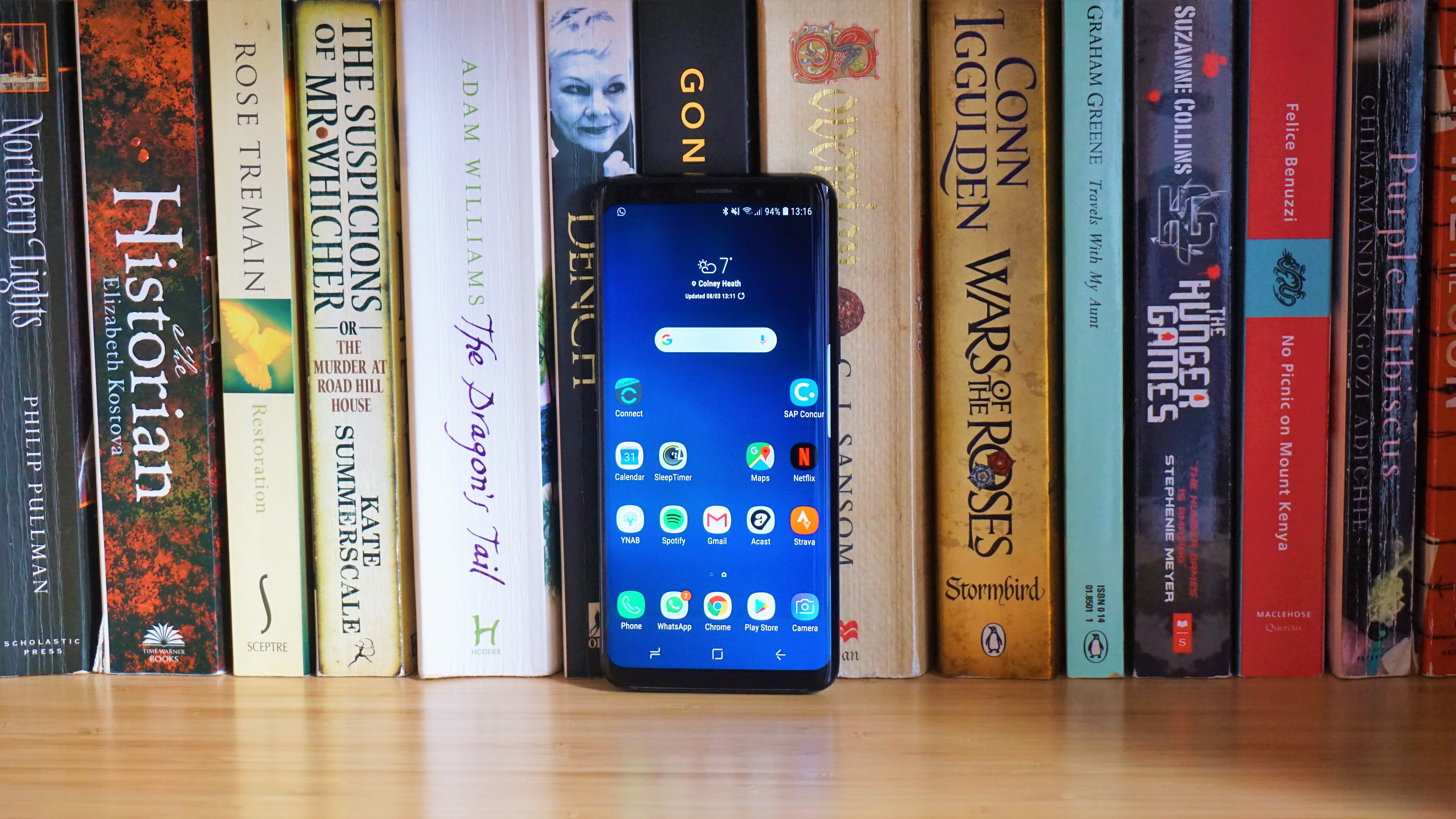
The Samsung Galaxy S9 has a similar sized screen to the XZ3, and it’s one of the only phones in the size category that can compete in terms of OLED quality. It has an excellent camera that supports dual apertures, edging ahead in low light, and packs a headphone jack.
The fact that it’s been out for a while now is the big thing in its favor – you can now pick it up for around £550 / $600, saving a big chunk of cash compared to the Xperia XZ3.
The two phones pack similar internals, so the main reason to spend extra for the XZ3 would be HDR video recording, the slightly larger battery and the design, if you prefer it.
Read our full Samsung Galaxy S9 review
Huawei P20 Pro
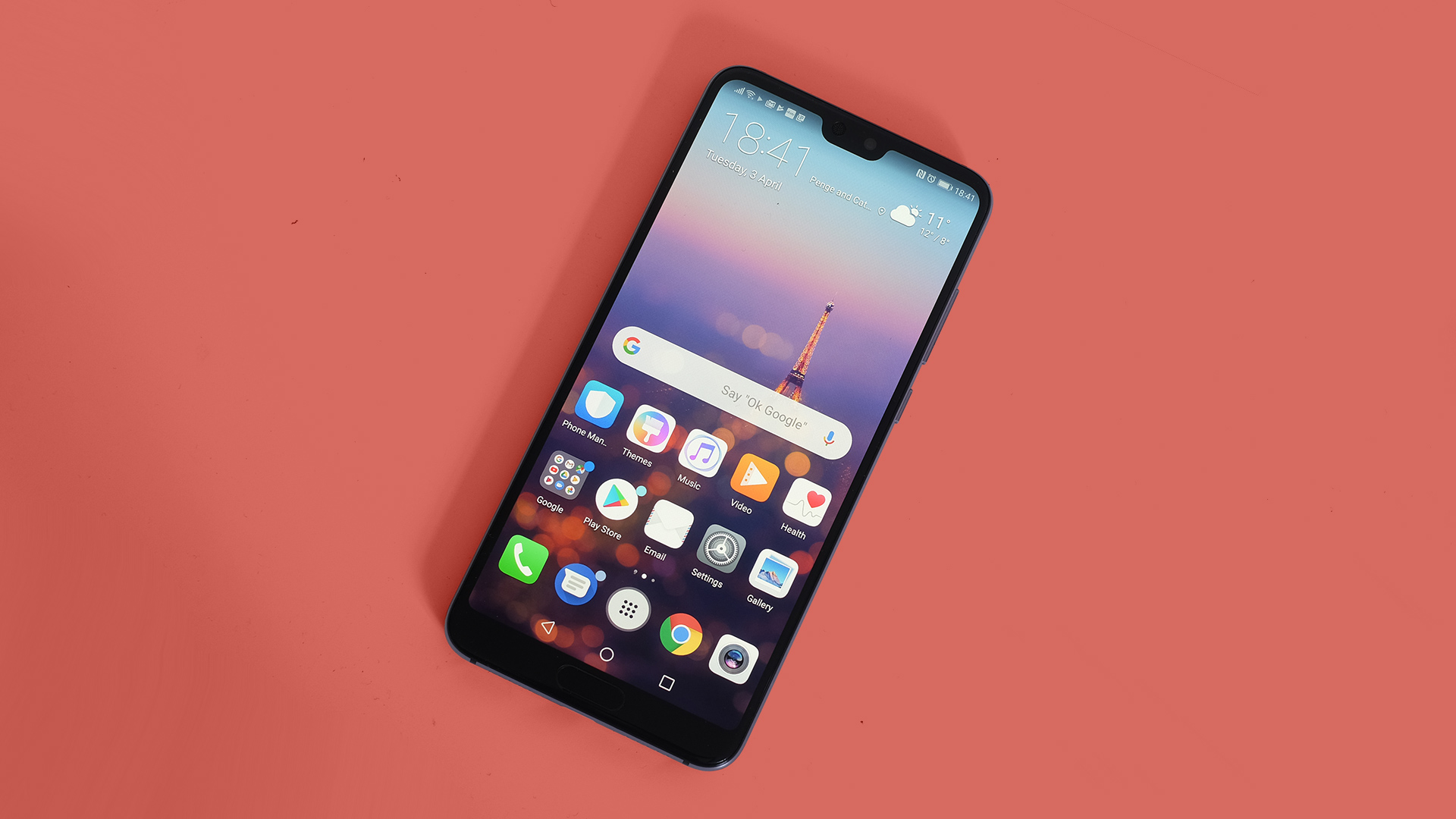
With its triple camera, the Huawei P20 Pro is a real threat to any smartphone on the market. It has an inferior screen to the Sony Xperia XZ3, but double the storage and a less laggy interface.
It also lacks wireless charging, but with its 4,000mAh battery it lasts significantly longer, so will definitely see you through a full day.
Read our full Huawei P20 Pro review
iPhone XS
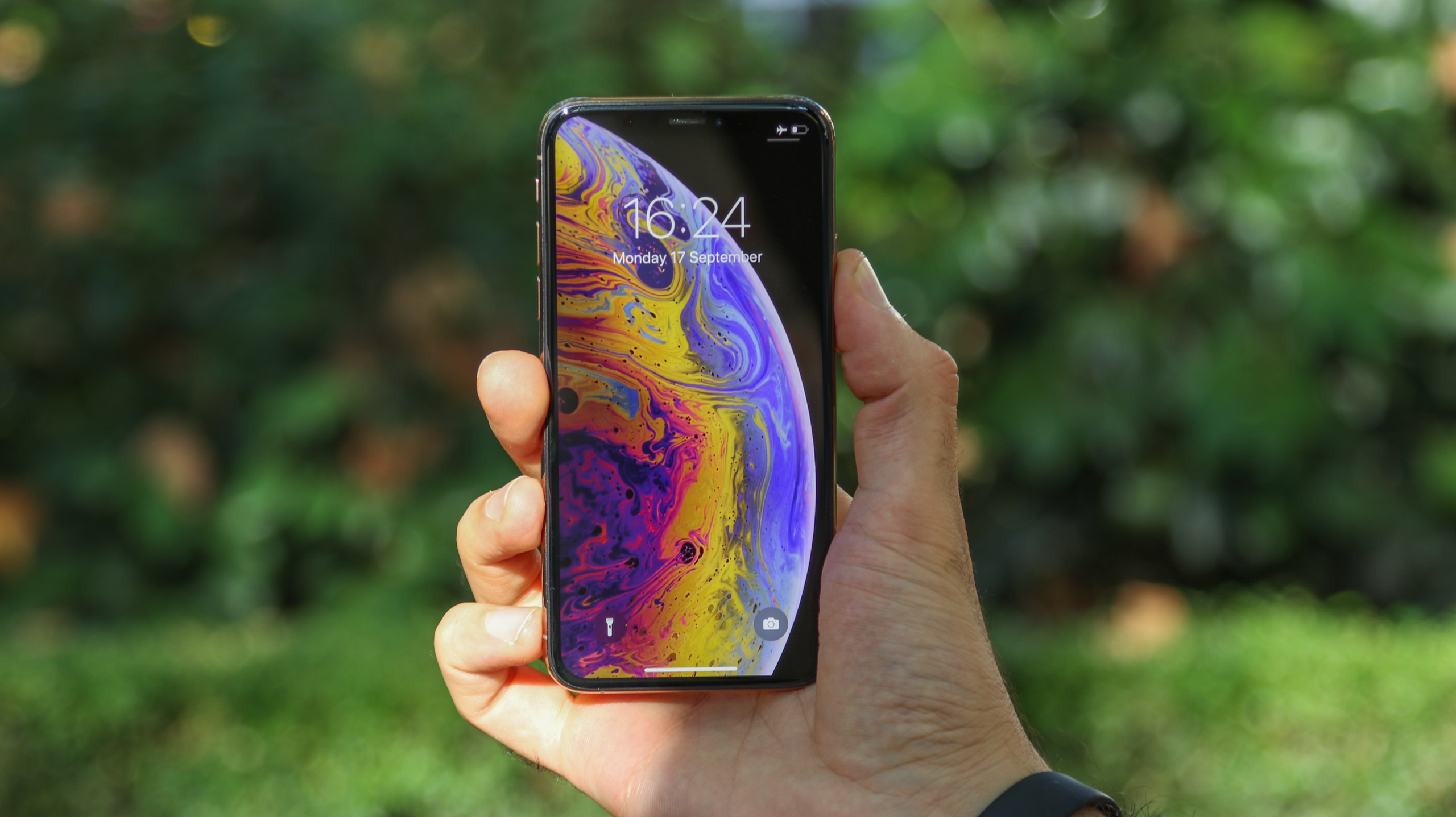
The iPhone XS is the only iPhone currently available that goes toe-to-toe with the XZ3 in a few key areas: high-resolution OLED screen, premium design and powerful chipset.
The iPhone’s UI – iOS 12 – is much more refined than Sony’s latest Android experience, and the camera is better across conditions. That said, the XZ3 undercuts the iPhone XS by £300 / $100.
Read our full iPhone XS review
OnePlus 6
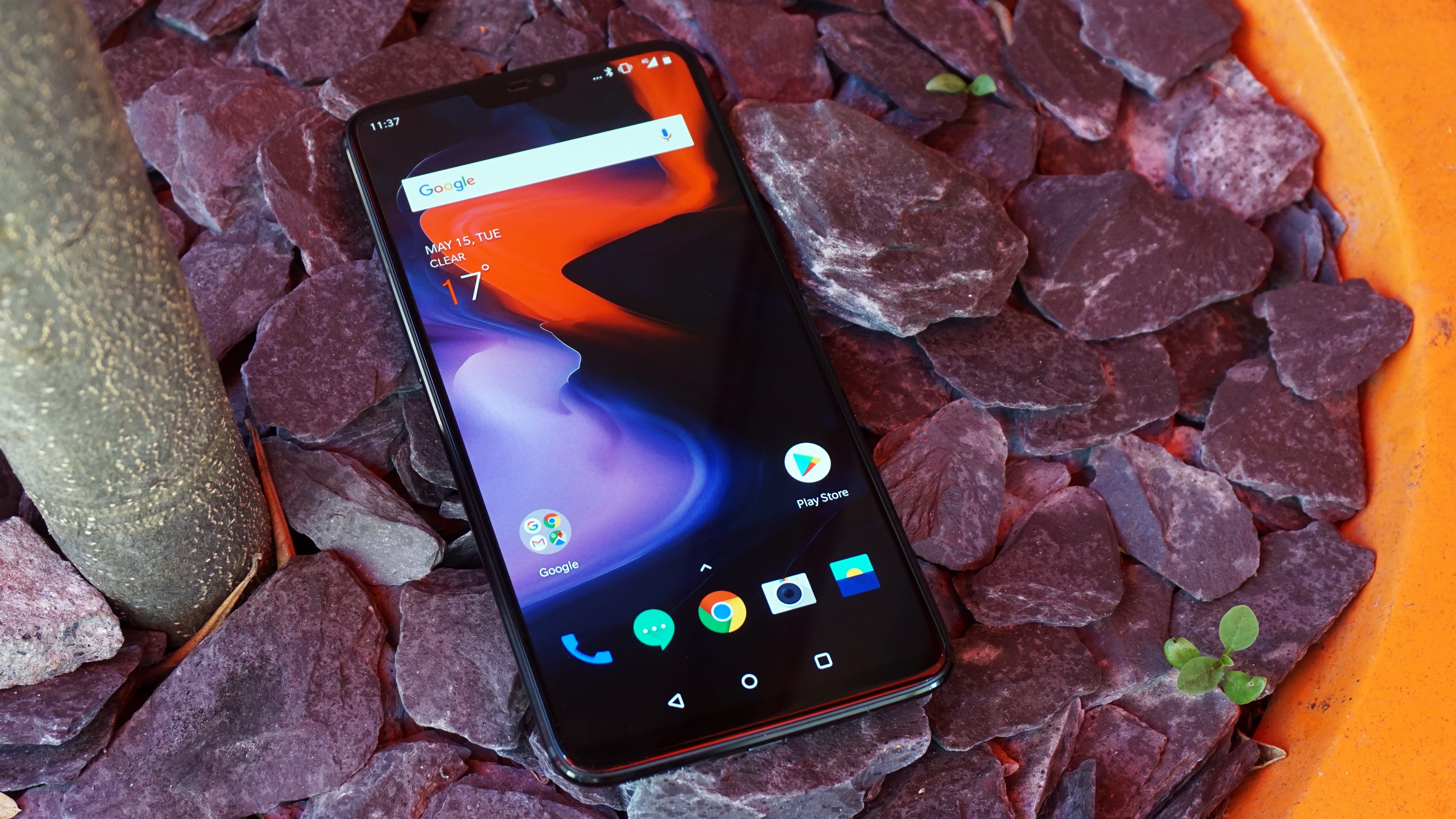
If value is your main driver, the OnePlus 6 costs less than the Xperia XZ3 while still offering a Snapdragon 845 chipset, 64GB of built-in storage and a large OLED screen, albeit an inferior one. It hasn’t got the camera features the XZ3 has, and its design isn’t as refined.
That said, OnePlus is all about balancing flagship elements with bang for buck, and there’s no denying that, side-by-side with the XZ3, that’s what the OnePlus 6 offers.
Read our full OnePlus 6 review
0 comments:
Post a Comment